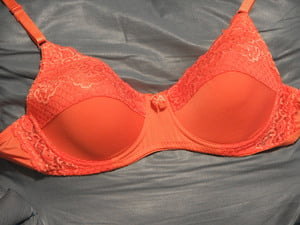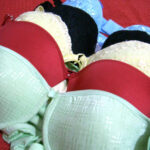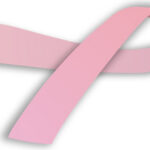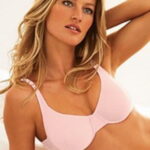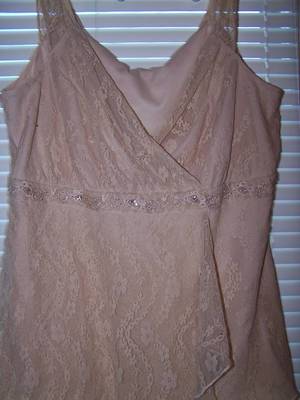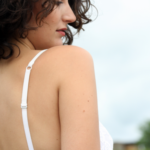One of the most common complaints women have about clothing is about bras. For many women, bras seem to cause a number of different problems. Finding the cause of these problems is the first step to finding a solution.
Problem: Band rides up in the back
Your bra is too big. Typically, riding up means the band is too large, but it may also be caused by the cup size being too big so the breasts don’t fill the cup appropriately.
Solution: Tighten the band by choosing a different hook on the strap. If that doesn’t make it small enough, by a bra with a smaller size band (e.g. 36 instead of 38) and/or a smaller cup (B instead of C).
Problem: Band digs in
This can indicate that the bra is too small or just formed poorly to fit your body. Smaller bands are more likely to fold or roll under than larger ones, which may particularly be a problem for women with larger breasts.
Solution: Choose a larger band size (38 instead of 36) or a style with a wider band under the cups.
Problem: Shoulders dig in
If you think about the logic behind this problem, it is pretty clear that the shoulder straps are trying to support too much weight, which is causing them to push into the skin.
Solution: Find a style that has wider straps or ones with cushions.
Problem: Sagging breasts
Your bra is simply not giving enough support.
Solution: You need to choose a different style. Balconette bras are considered some of the best to support heavy, sagging breasts that may occur with age and especially after significant weight loss. Although an underwire would be helpful, it may not be necessary if you can find a bra with sturdy cups, both on the bottom and the sides. Be sure the shoulder straps are shortened appropriately to give good lift.
Problem: Shoulder straps fall
They aren’t fitting tightly enough against your shoulders, which may be caused by them being too long or too loose.
Solution: Shorten the straps. If that doesn’t help, try tightening the band around the back. The movement of it riding up puts slack in the shoulder straps, so they may fall down your arms. Choosing a bra with a smaller cup size may also help since that has the same impact but from the front; filling out the cups more fully helps pull the straps tighter due to gravity.
Find the right fit
Measuring properly is half the battle to finding the best fitting bra. It is best to have help. Measure around your chest just above your bustline and under your arms. Even though this isn’t where the band falls, it is a good measurement for the size to choose. This measurement is the number part of a bra’s size.
To find the cup size, measure around the fullest part of the bust. Subtract the band size number from this bust measurement. The difference indicates the cup size. A 2″ difference means you should choose a B cup, 3″ is C cup, 4″ D cup, and so on.
Also don’t assume that all styles are the same. Different styles and different brands will have different fits, so if you can’t seem to find a bra that fits comfortably, keep trying different types until you find one that gives the comfort and support you need.
